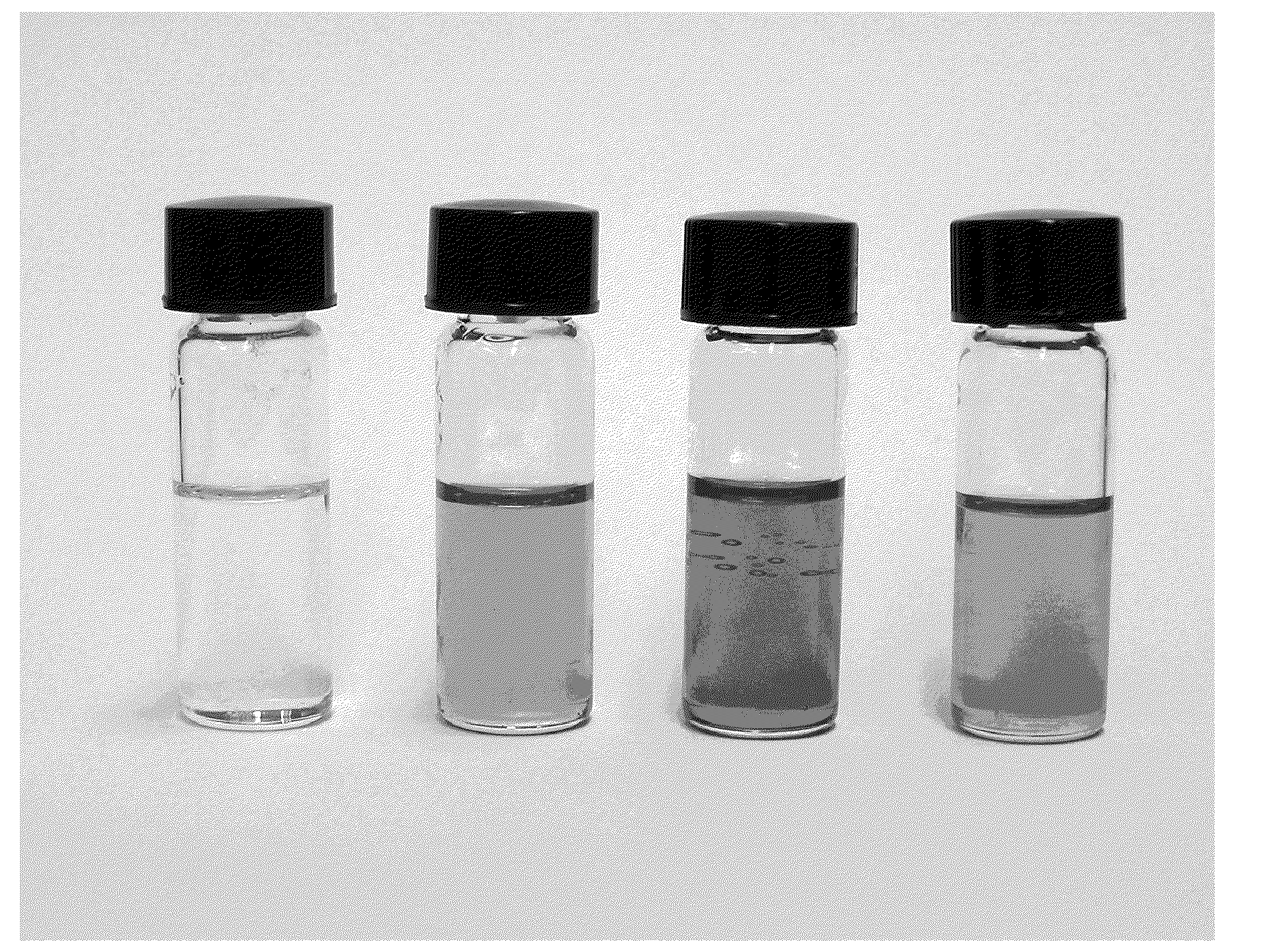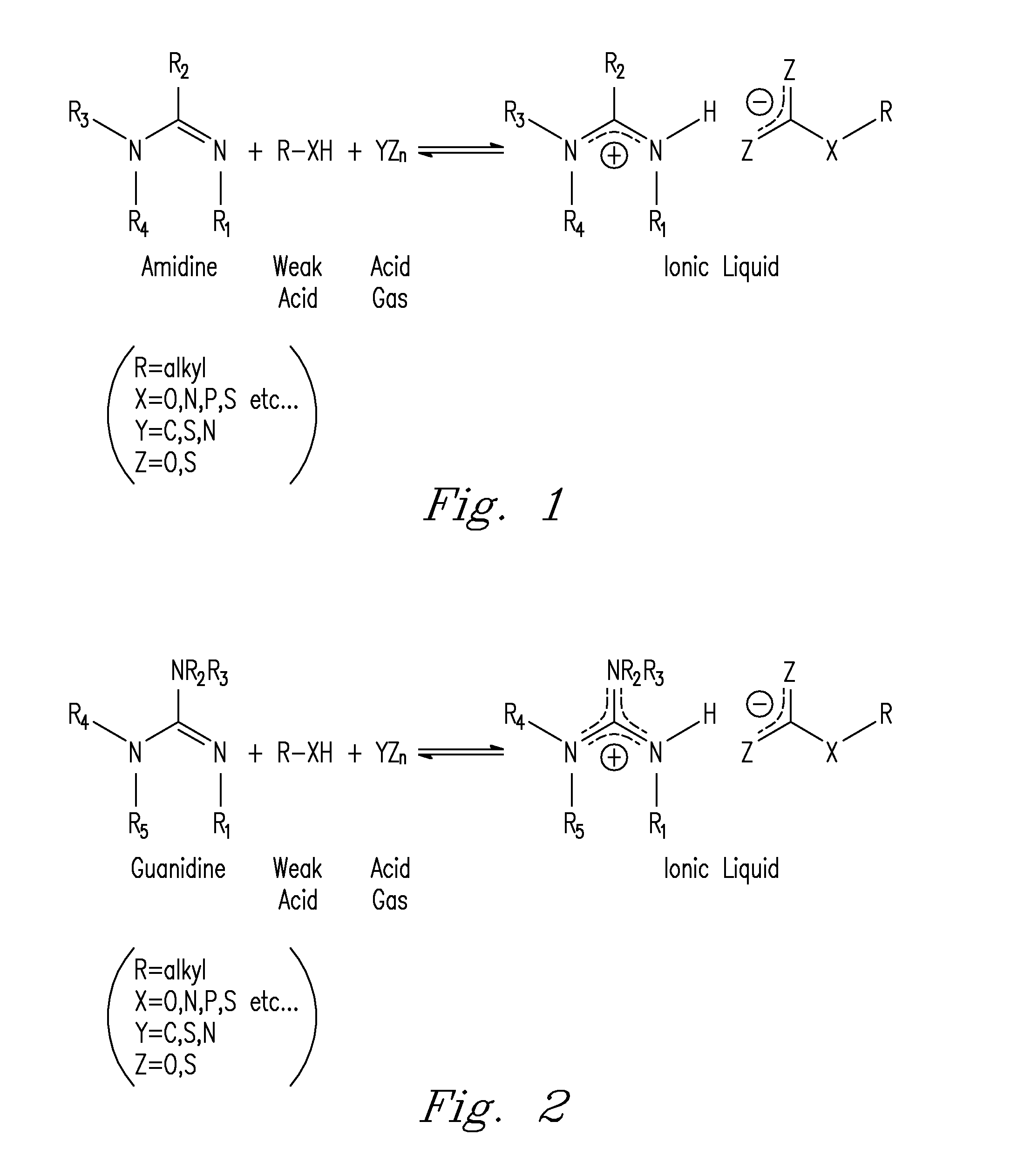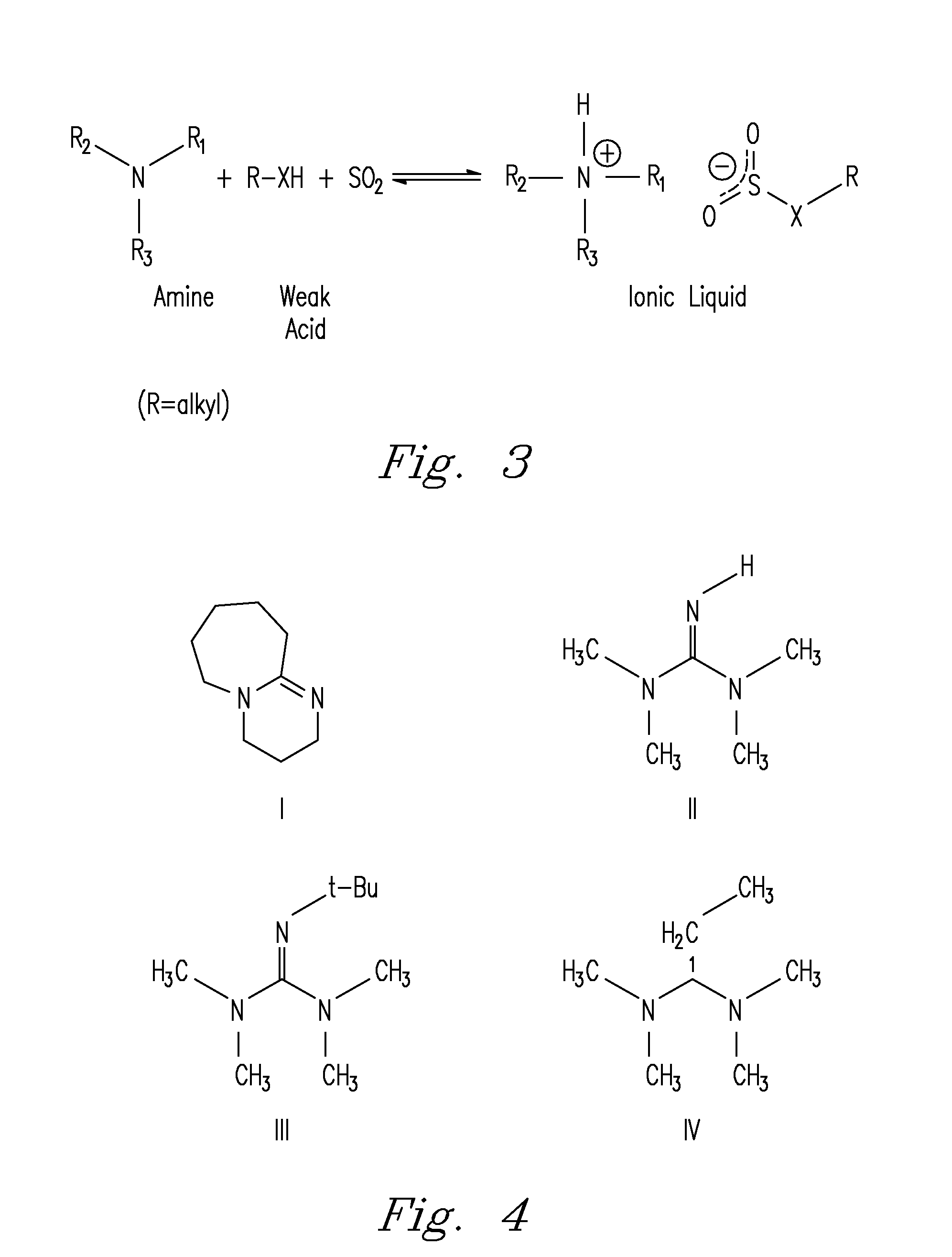Capture and Release of Mixed Acid Gasses With Binding Organic Liquids
a technology of organic liquids and mixed acid, which is applied in the field of capture and release of mixed acid gasses with binding organic liquids, can solve the problems achieve the effects of reducing the thermodynamic stability of chemically bound acid gas, reducing hydrogen bonding, and less energy inpu
- Summary
- Abstract
- Description
- Claims
- Application Information
AI Technical Summary
Benefits of technology
Problems solved by technology
Method used
Image
Examples
example 1
Reaction of COS with DBU and 1-Hexanol
[0052]The reactivity of COS towards amidine / alcohol and guanidine / alcohol blends was first monitored by changes in conductivity in a solution of diazabicyclo[5.4.0]undec-7-ene (DBU) and 1-hexanol in MeCN. COS absorption by DBU and 1-hexanol was rapid, similar to that of CO2. The uptake of COS was complete within 30 seconds and was mildly exothermic, causing the solution temperature to jump ° C. The conductivity of the MeCN solution was initially 25 μS prior to COS addition likely due to small impurities in solution. The conductivity of the solution rose to 2,000 μS after COS addition, indicating the formation of a salt, which we propose is the O-alkylthiocarbonate salt. Mixtures of COS / DBU and COS / 1-hexanol in MeCN were non-conductive, showing that the formation of the charged product from COS is only possible in the presence of both base and alcohol.
[0053]The elemental analysis of the isolated product matched that expected for the formulation [...
example 2
The Reaction of CS2 with DBU and 1-Hexanol
[0055]CS2 is proposed to bind to amidines and guanidines and alcohols to form the proposed O-alkylxanthate salt. CS2 was very slow to react with DBU and 1-hexanol in MeCN to form the proposed CS2BOL salt. A solution of CS2, DBU and 1-hexanol (0.1 M in each) in MeCN at ° took nearly 2 h to react, with the conductivity of the solution rising from 54 μS to 5,400 μS. The small conductance of the solution prior to CS2 addition is likely due to small impurities in the solution. After CS2 addition, the reaction temperature spontaneously rose 27° C. over two hours. Equimolar mixtures of CS2 / DBU and CS2 / 1-hexanol showed no conductance, demonstrating that the formation of a charged species with CS2 is only possible in the presence of both base and alcohol.
[0056]The product of the reaction of CS2 with DBU and 1-hexanol was characterized with 1H, 13C NMR, and IR spectroscopy (Table 2). The 1H NMR spectrum of the 1:1:1 mixture of DBU, 1-hexanol and CS2 ...
example 3
The Reaction of SO2 with Amine, Amidine and Guanidine Bases and 1-Hexanol
[0058]The reaction of SO2 with amidine or guanidine and alcohol blends to form the proposed SO2BOL salt were first monitored by conductivity. SO2 absorption by 0.1 M solutions of DBU and 1-hexanol in MeCN at 27° C. was rapid, with most of the reactions completed within 20 seconds. The SO2 uptake was exothermic as noted by a spike in the temperature from 27° C. to 32° C. The conductivity of the solution rose from 5 μS to 2,900 μS. The increase in conductance suggested SO2 was being chemically bound as a charged species and not just being physically absorbed by DBU and 1-hexanol. There was a minor increase in conductivity (25 to 200 μS) when SO2 was added to 0.1 M DBU in MeCN which is attributed to trace amounts of water reacting to form the DBU bisulfite salt. There was no conductance seen for a solution of SO2 in 0.1 M 1-hexanol in MeCN. Physically absorbed SO2 cannot demonstrate an increase in conductance beca...
PUM
| Property | Measurement | Unit |
|---|---|---|
| Temperature | aaaaa | aaaaa |
| Pressure | aaaaa | aaaaa |
| Concentration | aaaaa | aaaaa |
Abstract
Description
Claims
Application Information
 Login to View More
Login to View More - R&D
- Intellectual Property
- Life Sciences
- Materials
- Tech Scout
- Unparalleled Data Quality
- Higher Quality Content
- 60% Fewer Hallucinations
Browse by: Latest US Patents, China's latest patents, Technical Efficacy Thesaurus, Application Domain, Technology Topic, Popular Technical Reports.
© 2025 PatSnap. All rights reserved.Legal|Privacy policy|Modern Slavery Act Transparency Statement|Sitemap|About US| Contact US: help@patsnap.com



